South Korea #6 – Hahoe – The Mask Dance Drama – December 2014
A 12th Century Mask Dance Drama
Before we left the historic Folk Village of Hahoe, we had to take time to see the famous Mask Dance Drama called Hahoe Pyolshin-Gut Tal-nori, handed down by lower-class people since the middle of the 12th century. Village rituals were performed to appease the local goddess and drive away the evil spirits or to ensure much happiness and a good harvest for the village.
During the Summer, the play is held in an outdoor amphitheater but being December, we were sitting on the floor of a small auditorium. Tal-nori is one of four parts of the Pyolshin-Gut drama and portrays the conflicting relationship between Yangban (ruling class) and Sangmin (ruled class).
Testicles anyone?
This dance is made up of 6 episodes with a satirical story of a nobleman, a fallen Buddhist monk and it delineates the joys and sorrows of the ruled people. Musicians play native instruments and singers narrate the dance. In its essence, it allows the commoners of the village to poke fun at their superiors without repercussions since, after all, it is just a play.
Even though the performance was in Korean, it was pretty easy to follow the rather entertaining story. Of course we missed the many punch lines locals were laughing about. Originally 11 masks, only 10 have withstood the passing of time.
When the performance was over and the masks were removed we recognized several gentlemen we had previously met at the rice straw sewing work party. One turned out to be the famous woodcarver Mr. Kim Jong-Heung of the village. (See South Korea Blog 5.)
The Yangban (aristocrat) mask is believed to represent the highest artistic value of the Hahoe masks and has become a popular symbol throughout this part of South Korea. We even saw it on the signs for public restrooms, which, brings up an interesting subject, see our our next blog.
PS. Check out this website for more information on the Hahoe Mask Dance Performance. http://hahoemask.co.kr/board/index.php?doc=english/html/hahoe01.htm
- This poster was announcing the weekly Hahoe Mask Dance Drama.
- The famous Mask Dance Drama of Hahoe, Pyolshin-Gut, was first performed by the lower-class villagers in the mid 12th century.
- The depraved monk is pursuing Pune, the concubine of the aristocrat.
- This male actor portrayed Pune, the dainty concubine, perfectly.
- Yungban, the aristocrat, sports a long black beard.
- Jung, the depraved Buddhist monk, is a lecher and does not lead an ascetic life.
- The play allowed the commoners of Hahoe to poke fun at the aristocrats without repercussions.
- The butcher Peackchong kills the bull.
- After this dance, the old widow Halmi climbed off the stage and pestered the audience for money.
- Musicians played various instruments and singers narrated the story.
- Though we could not understand the entire dialog, the expressions of the actors through their masks were comical.
- When the performance was over and the masks were removed, we recognize several gentlemen we had previously met at the rice straw sewing work party. (See Blog 4.)
- Famous Hahoe carver Kim Jong-Heung played Jung, the fallen monk.



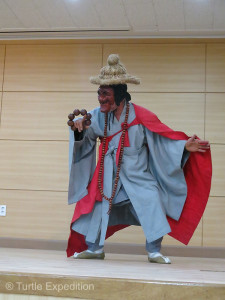
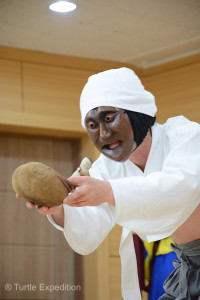
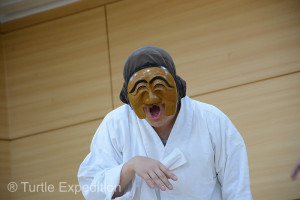
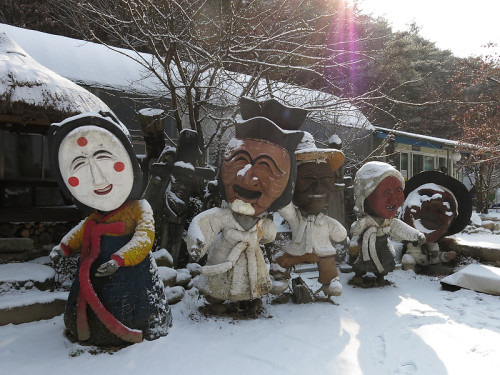
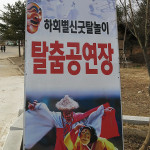
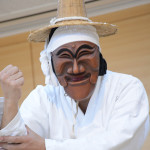
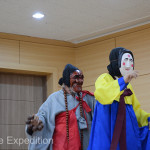
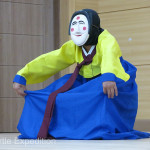
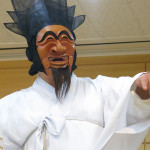
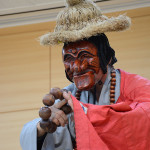
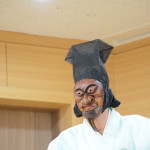
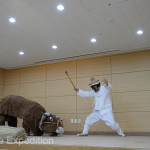
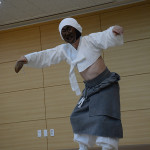
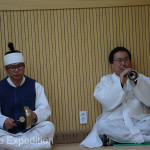
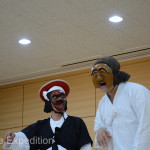
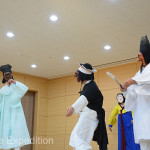
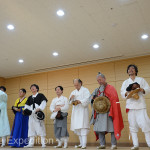
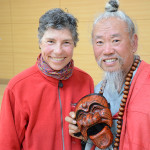





Leave a Comment